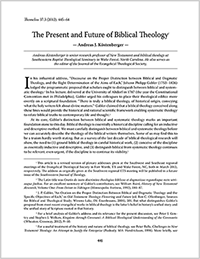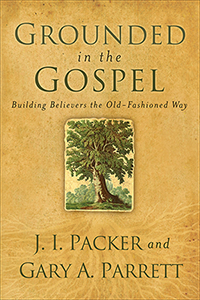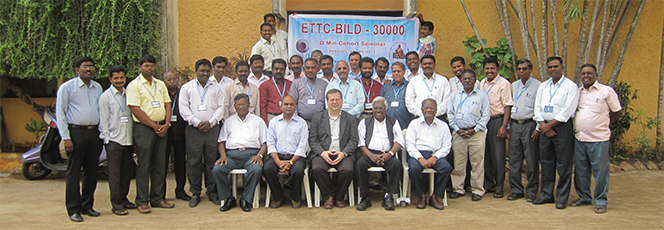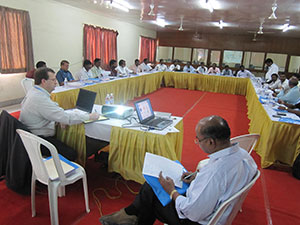 Roland Allen is a great conversation partner. His books have provoked many of us to return to what he called “the way of Christ and His Apostles” (a term coined long before Jeff Reed started using it). In The Ministry of the Spirit, Allen provides a marvelous model of doing theology in culture. Not only does he address the role of the Holy Spirit, but does so according to a careful biblical theology of the Book of Acts that is applied to various issues of missionary work of the day. The theological foundation is so solid that it can and should be readily used today.
Roland Allen is a great conversation partner. His books have provoked many of us to return to what he called “the way of Christ and His Apostles” (a term coined long before Jeff Reed started using it). In The Ministry of the Spirit, Allen provides a marvelous model of doing theology in culture. Not only does he address the role of the Holy Spirit, but does so according to a careful biblical theology of the Book of Acts that is applied to various issues of missionary work of the day. The theological foundation is so solid that it can and should be readily used today.
If you want to know the essence of Allen’s understanding, consider this excerpt from the final chapter: “In this large sense, if we believe in the Holy Spirit as He is revealed in the Acts, we must be missionaries. We cannot accept the teaching of the Acts, we cannot believe that the one thing of importance to our souls is to receive and know the Spirit, without feeling ourselves driven to missionary action. … Activity world-wide in its direction and intention and hope and object is inevitable for us unless we are ready to deny the Holy Spirit of Christ revealed in the Acts” (p. 61).
Pentecost and the World: The Revelation of the Holy Spirit in the ‘Acts of the Apostles’ is the actual title of Roland Allen’s work on which we are focused. It is more commonly known as “The Ministry of the Spirit” because that is the title given to the volume edited by David M. Paton that contains several of Allen’s works that are not readily available elsewhere. Pentecost and the World is the first section, but it only takes up a quarter of the book. Other sections include Non-Professional Missionaries, Mission Activities Considered in Relation to the Manifestation of the Spirit, St. Paul and the Judaizers: A Dialogue, An Illustration from V. S. Azariah, The Case for Voluntary Clergy, and To the Parishioners of Chalfont St. Peter. It is not clear exactly why or how the volume got its name, but it is probably the work of the publisher, since it is not used as such by Allen in the text and not mentioned by Paton in the Foreward.
The Ministry of the Spirit is not as well-known as Allen’s other works even though Pentecost and the World was written in 1917 and published by Oxford University Press 5 years after the monumental Missionary Methods: St. Paul’s or Ours? and 10 years before The Spontaneous Expansion of the Gospel and the Causes which Hinder It. Perhaps this is simply because it was published as a pamphlet and was unavailable in book form until 1960. In explaining the selection of works for The Ministry of the Spirit, Paton states, “They have all been long out of print, and most of them are now unobtainable even to persistent advertisers” (p. vii).
The publisher of the edition of The Ministry of the Spirit that I have (Eerdmans, 1970) puts “Three by Roland Allen” on the back cover and places it in-between Missionary Methods: St. Pauls or Ours? and The Spontaneous Expansion of the Church. This volume was first published by World Dominion Press in 1960, perhaps in response a reference in the Biographical Memoir preface that says that “he [Allen] prophesied to his son that his writings would come into their own about 1960” (p. ix).
The foreward was written by David M. Paton who edited The Ministry of the Spirit. If you think Allen is radical, you should read Paton’s work called Christian Missions and the Judgment of God. This book is not about the importance of missions so that lost people don’t face the judgment of God. Rather, it is about how mission agencies will face the judgment of God if they don’t take seriously “the Way of Christ and His Apostles!” Although only a page long, the foreward gives a nice glimpse into the publishing of The Ministry of the Spirit. Similarly, the Biographical Memoir by Alexander McLeish, who had extensive interaction with Allen at the time of the initial publishing of these works, is a fascinating glimpse into his life, ministry, ideas, and values.
Allen’s explanation of the role of the Spirit was not written with the Pentecostal Movement in mind, but it is interesting that it was first published in 1917, near the time of the conclusion of the Azusa Street Revival. Allen is not responding to the Pentecostal Movement or caught up in any controversy about the Holy Spirit. The closest he gets is one paragraph on discussions about the gift of tongues being “curiously uninteresting and unprofitable” (p. 22). It is too bad that Allen’s work on the Spirit has not been more broadly read because it offers remarkable insight based on a solid biblical theology of Acts. Allen’s theological work could be very helpful in addressing today’s various issues related to the Spirit.
Pentecost and the World: The Revelation of the Holy Spirit in the ‘Acts of the Apostles’ is only 61 pages in length. It is composed of seven chapters and a conclusion.
Chapter I, “The Gift of the Holy Spirit,” begins with “The Acts of the Apostles is the record of the fulfillment of a promise made by Christ to His disciples and of the consequences which followed” (p. 3). Despite his focus on the Holy Spirit in Acts, Allen takes issue with those who prefer to call the book “The Acts of the Holy Spirit” because that “obscures the human element.” Allen proceeds to discuss the title of the book. “In this degree, the title ‘The Acts of the Holy Spirit’ is true and useful, and should save us from the error of reading the book merely as the Acts of the Apostles” (p. 3).
Allen shows remarkable skill in doing biblical theology as he deals with the relation of Luke’s Gospel and the Book of Acts. Rather than simply recognize Acts as the fulfillment of Christ’s Great Commission, he notes that Luke does not focus on Christ’s command. “He begins Acts, as he ended his Gospel, not with a command, but with a promise of the Spirit” (p. 4). Allen draws attention to the statement by Christ in Acts 1:5 that “John baptized with water” to link the work of the apostles to the work of Christ through the baptism of the Holy Spirit. He also explains how the Spirit given at Pentecost was “peculiarly Christian” and distinct from any prior manifestation of the Spirit. According to Allen, the gift of the Spirit was 1) a definite gift, namely the “Spirit of the Son” received at a definite time and “given only to Christians;” 2) a real gift since “there was a day when the apostles had it not;” and 3) a sure gift because the apostles had a certainty that can “bring home to us a like certainty.”
Chapter II, “The Spirit Revealed as the Inspirer of Missionary Work,” begins with “Acts is the record of the events which followed the gift of the Holy Spirit” (p. 13). Allen presents the book as a volume of Christian biography and church history. As Christian biography, Acts is the account of prominent men and their missionary work. Again, with astute biblical theology skill, he says “of the lives of those men of whom the most is recorded only certain events are told us” (p. 13). Allen argues that the events told in Acts are almost exclusively missionary in nature. As church history, Acts tells us “the missionary history, not the internal history” (p. 15) and “these considerations are surely sufficient to convince us that the book of Acts is strictly a missionary book” (p. 17). Allen then takes several pages to analyze Luke’s references to the Holy Spirit in Acts, as well as to criticize the fact that “our best writers on the Holy Spirit have been singularly blind to it” (p. 20).
Chapter III, “The Revelation of the Spirit as Creating an Internal Necessity for Missionary Work,” begins with an acknowledgment that the Holy Spirit’s “first gift was a gift of tongues.” However, Allen doesn’t allow contemporary debates, apparently from any side, distract him from his biblical theology work. “Into this controversy I do not propose to enter. To me, I confess, these discussions seem curiously uninteresting and unprofitable, and their conclusions equally dubious and barren. They tend rather to divert the mind.” (p. 22). He focused on what the apostles did with the gift of tongues, namely “preach Christ.” Allen points out that except for Paul’s farewell speech to the Ephesian elders, “as for the rest, all are missionary sermons” (p. 22). He shows how the disciples, even after the resurrection were still thinking in terms of “the restoration of the kingdom of Israel to worldly power” and their inability even “meditating upon the words and works of Jesus Christ . . . to perceive the real significance of them first for the Jews and then for the world” (p. 25). They needed the Spirit to be given for them to have “an internal necessity to preach the Gospel” (p. 27).
Chapter IV, “The Spirit Revealing the Need of Men,” is about the “profound conviction that men needed Christ” (p. 29). “Forgiveness of sins … takes as important a place in his [Paul’s] preaching as ‘that Jesus is the Christ’” (p. 30). Although repentance had always been emphasized, “Repentance for sin which did not bring men to Christ was no longer adequate” (p. 31). In application of this truth, Allen confronts a debate of his day regarding the priority of focus on bringing all men to the knowledge of Christ or just helping them do what they now know to be right. The former leads to missionary zeal and the latter leads to lukewarmness. However, to Allen, the zeal comes not from the need, but from the Holy Spirit “who came to them with the fire of divine love” (p. 35).
He then tackles a contemporary tendency that still has relevance for today. If we value “heathen morality” too highly, namely the recognition that people can be good without being Christians, we are admitting that “If they can do very well without Christ, then so could we. This is to turn our backs upon the Christ of the gospels and the Christ of Acts …” (p. 37). “It is an essentially pre-Christian attitude, and implies that the Son of God has not been delivered for our salvation” (p. 37). Although we may respect the “religious systems of the East” (remember, Allen was a missionary in China), he compares them to Judaism and Greek philosophers confronted in Acts. “The apostles, inspired by the Holy Ghost, were troubled with no doubts whether the monotheism of the Jews or the philosophy of the Greeks were sufficient for their salvation” (p. 37). Not preaching Christ is at best “an excuse of idleness” and at worst “a turning back from Christ to another gospel, which is not another” and a “flat contradiction of the whole teaching of the Acts” (p. 38). “In the Acts these two meet, the redeeming Spirit and the utter need and it is the redeeming Spirit that reveals the utter need” (p. 38).
Chapter V, “The Administration of the Spirit” focuses on the giving of the Spirit to all who believe. It is the “key of the apostolic work” (p. 42). Allen explains that it was normal for it to be associated with the “laying on of hands,” but not always. He once again relies on serious biblical theology to address an issue. There were men “who had already received the Holy Spirit” (p. 39). If we focus too much on the laying on of hands, “we are often in danger of laying the greater emphasis on that upon which he laid the less” (p. 42). “Luke writes as though the gift of the Holy Spirit were the one thing of vital importance, by whatever means that gift was conveyed, whether with, or without the external act” (p. 42).
Chapter VI, “The Spirit: The Source and Test of New Forms of Missionary Activity,” begins with an odd statement, “Before Pentecost the apostles are represented as acting under the influence of an intellectual theory; after Pentecost they are represented as acting under the impulse of the Spirit” (p. 44). This is not to denigrate the teaching of Christ, but to recognize that His teaching was not complete without the presence of the Spirit. Allen explains that “Christ had given them a world-wide commission, embracing all the nations; but intellectually they did not understand what He meant. They found that out as they followed the impulse of the Spirit” (p. 46). He acknowledges that “Their view was partial, but it was not false” (p. 45). He compares their indecision regarding the selection of Matthias before Pentecost to their action after Pentecost. “The apostles no longer argue: they obey a spiritual impulse” (p. 45). Allen recognizes that this sounds like a strange doctrine of “’First act, then think’” (p. 47). He stresses that “the apostles did not act thoughtlessly,” but also that they “did not base their action upon a nice calculation of the probable consequences” (p. 48). At this point, Allen engages in some serious theology in culture by stating that “Today we are more anxious about consequences, less sure about sources [the Holy Spirit]” (p. 48). “From this the apostles were saved by their recognition of the supremacy of the Spirit.”
Chapter VII, “The Gift of the Spirit: The Sole Test of Communion,” is essentially an exploration of how Gentiles were added to the Church, “a story which occupies so important a place in the Acts of the Apostles” (p. 52). Allen makes some interesting observations, such as Christ “called no Gentile to preach the gospel to the Gentiles” (p. 53). After exploring various dimensions and perspectives on the dilemma, Allen provides a simple solution. “God gave them the Holy Spirit” (p. 56). He points to the various testimonies of Peter, especially his claim that God had “given them the Holy Spirit, even as he did unto us” (p. 56). Allen relies on a practical theology. “If they share the one Spirit, they are one” (p. 57). “God gave the Holy Spirit; they admitted at once that nothing more was needed for salvation, nothing else was needful for communion” (p. 57).
Interestingly, Allen doesn’t draw out contemporary implications of this teaching in this chapter. However, he does lean toward it in his “Notes to Chapter VII.” “When the apostles spoke of men with whom they were not in communion, they used language that those … had not the Spirit” (p. 57). All through these notes are elaborations on the nature of being in communion if you have the Spirit and warnings about tests that exclude someone from communion who has the Spirit. Clearly, this is an important issue for Allen, even if he doesn’t address specific situations, since it comes at the end of his work. Given the information in the Biographical Memoir, one might wonder if Allen himself has been the victim of exclusion from communion for propagating some of the teaching in this book and others.
The Conclusion could be titled, “The Spirit Makes Us All Missionaries.” Allen summarizes his book by saying “In the preceding chapters I have tried to show that the coming of the Holy Spirit at Pentecost was the coming of a missionary Spirit” (p. 59). He acknowledges that “those who received the Holy Spirit became witnesses” and “the missionary Spirit was given to all … some received special direction … some received no such special call” (p. 59). Allen explains why Luke focuses on the type of missionary work,namely so that the revelation of the Spirit would be most clear. However, his point in the conclusion is that “the Spirit of desire for the salvation of the world may be expressed in any form of Christian activity” (p. 60).
“In this large sense, if we believe in the Holy Spirit as He is revealed in the Acts, we must be missionaries. We cannot accept the teaching of the Acts, we cannot believe that the one thing of importance to our souls is to receive and know the Spirit, without feeling ourselves driven to missionary action. … Activity world-wide in its direction and intention and hope and object is inevitable for us unless we are ready to deny the Holy Spirit of Christ revealed in the Acts” (p. 61).
Perhaps in another future blog, we will deal more with the significance and implications of Allen’s contribution described above.

 The Antioch School certainly fits this finding. Only a small percentage of our students live within 100 miles of our headquarters. For most of our students, it is the location of their own churches that is important, not the location of the Antioch School.
The Antioch School certainly fits this finding. Only a small percentage of our students live within 100 miles of our headquarters. For most of our students, it is the location of their own churches that is important, not the location of the Antioch School. “
“ When a book is loaded with some of my favorite BILD terms (such as kerygma, didache, catachesis), it really gets my attention. Consider this great quote from
When a book is loaded with some of my favorite BILD terms (such as kerygma, didache, catachesis), it really gets my attention. Consider this great quote from  Formal models of theological education are characterized by the schooling paradigm, whereas nonformal models are not. Rather, nonformal models of theological are characterized by intentional learning in real-life contexts. The differences can be seen through descriptions related to the following categories.
Formal models of theological education are characterized by the schooling paradigm, whereas nonformal models are not. Rather, nonformal models of theological are characterized by intentional learning in real-life contexts. The differences can be seen through descriptions related to the following categories.
 Each of these key leaders is also using BILD resources to equip a cohort of other key leaders in their church networks and church planting organizations. For instance, they don’t “take the Acts course” from me, but rather they “teach the Acts course” to their key leaders. And most of their leaders are enrolled in Bachelor of Ministry and Master of Ministry degree programs of the Antioch School (who are also each training a cohort of leaders using the Acts course). This means that in a “competency cohort” of 15 top leaders, each is training a cohort of 10 leaders (who are also each training a cohort of 10 leaders) for a total of 1665 leaders being trained using the BILD Leadership Series courses. Additionally, each student in the Antioch School is also using the First Principles to disciple a small group of believers and/or train a small group of grassroots leaders.
Each of these key leaders is also using BILD resources to equip a cohort of other key leaders in their church networks and church planting organizations. For instance, they don’t “take the Acts course” from me, but rather they “teach the Acts course” to their key leaders. And most of their leaders are enrolled in Bachelor of Ministry and Master of Ministry degree programs of the Antioch School (who are also each training a cohort of leaders using the Acts course). This means that in a “competency cohort” of 15 top leaders, each is training a cohort of 10 leaders (who are also each training a cohort of 10 leaders) for a total of 1665 leaders being trained using the BILD Leadership Series courses. Additionally, each student in the Antioch School is also using the First Principles to disciple a small group of believers and/or train a small group of grassroots leaders.